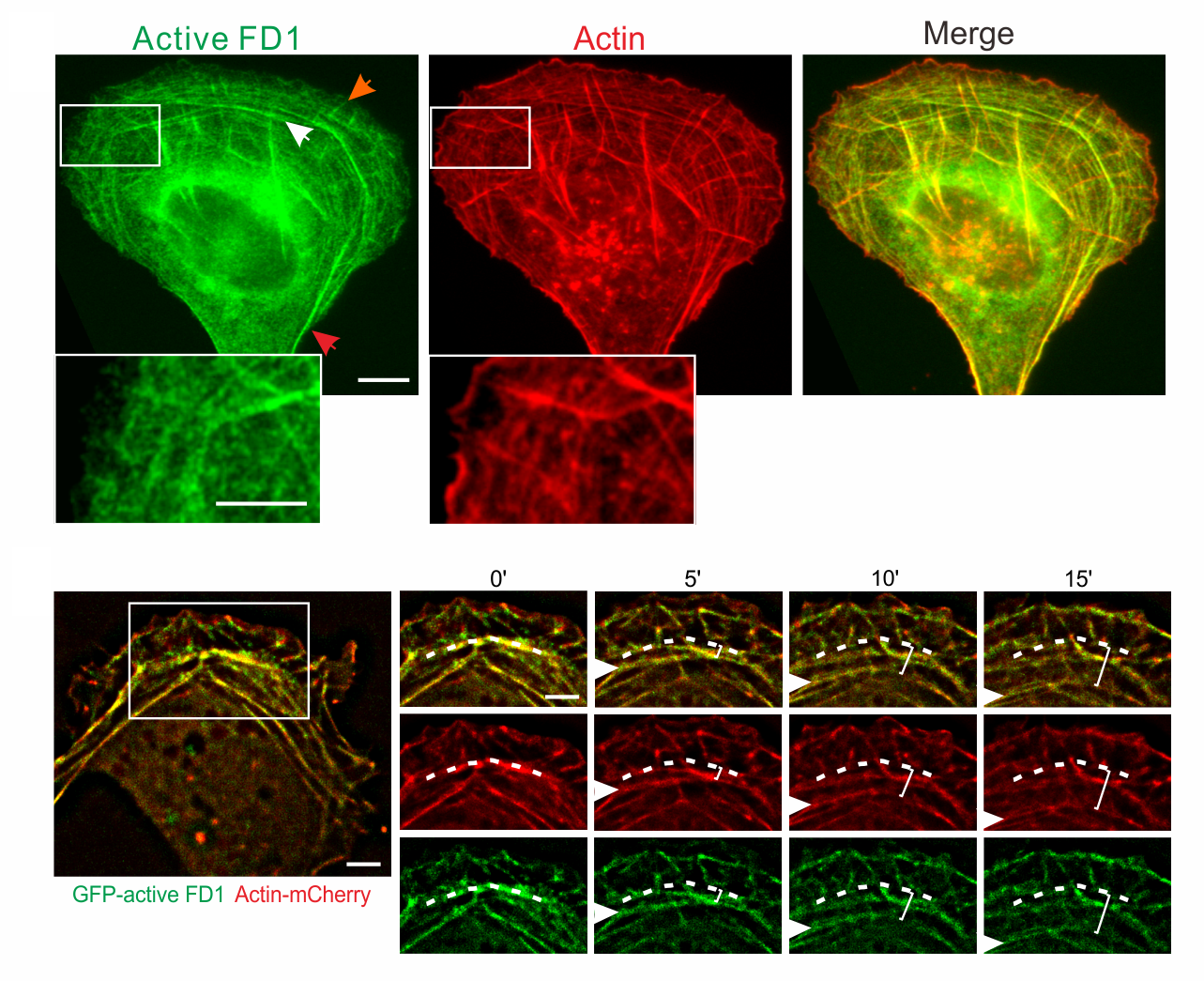Active FHOD1 promotes the formation of functional actin stress fibers

Active form of FHOD1 is a dynamic component of actin filaments
This article aims to deepen our knowledge of cell organization and more precisely the function of FHOD1 in it. Being apart of the formin family, FHOD1 is one of the major expressor and works with a lot of cell lines and tissues. It is also involved in others cellular functions such as morphogenesis, cell division or cell polarity. In this study, the team of the Institut Pasteur of Shanghai led by Yaming Jiu focused on the active form of FHOD1 which plays a role in the formation of functional actin stress fibers.
Actin is a family of proteins which is one of the major components of the cytoskeleton. Forming polarized and dynamics microfilaments, the actin protein take part in cellular processes. The actin microfilaments assemble into diverse three-dimensional structures which permit to make the various cellular movements happen; they move to re-organize the cytoskeleton, motorized by myosin II which interacts with actin. It exist 3 subcategories of actin stress fibers.
The formin FHOD1 acts as a nucleating, capping and binding protein of actin filaments. The formin has two configurations: auto-inhibited and active. While the first means a bad actin running, the second seams to lead movement of the actin stress fibers. When its C-terminal diaphanous auto-regulatory domain interacts with its N-terminal, the protein stays in its auto-inhibited form. But the researchers notice that, removing the DAD region of the FHOD1, which correspond to amino acid 1012-1164 of the C-terminal, leads to the activation of the formin.
During stress actin fiber assembly, active FHOD1 is located along the fibers. First, it’s positioned in the periphery of the cell and then it moves fast with a centripetal movement and finally incorporated itself in the transverse arc of actin. Furthermore, the researchers found out that expression of FHOD1 in cells induce formation of thick rigid actin fibers.
This work revealed several new aspects on the cellular function of FHOD1. The team demonstrated that the active form of FHOD1 can be recruited by all three categories of actin stress fibers. They described the trajectory of active FHOD1, from the cell periphery taking a centripetally move. And finally, the scientists informed about the FHOD1 knockdown with modification of fibers and defect in cell migration and spreading. They now want to precise molecular function of FHOD1 in the context of its interaction molecules.
Link: https://doi.org/10.1042/BCJ20190535